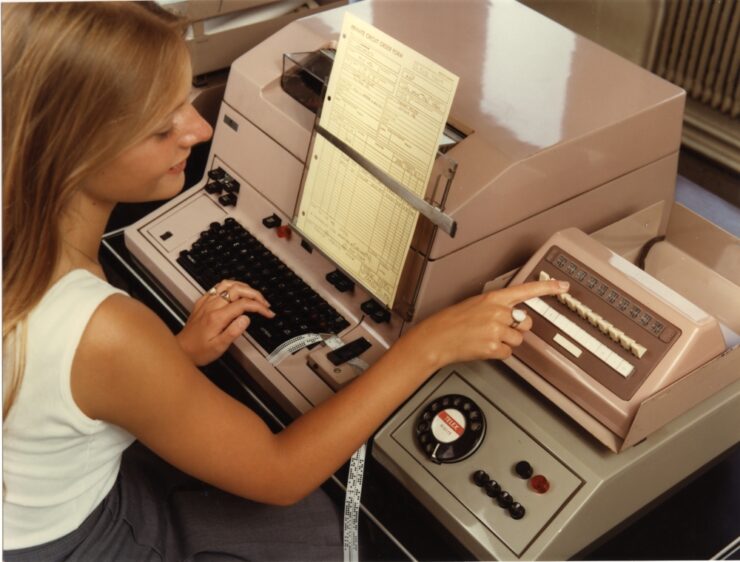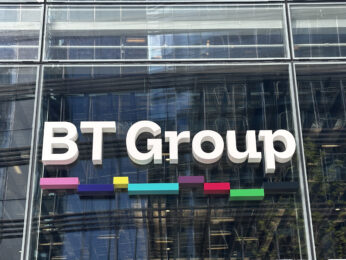BT, (or British Telecommunications to give the company its full name), began in 1846 with the founding of the first UK telegraph company, The Electric Telegraph Company. Almost from the beginning its activities were tied in with the Post Office, which moved into telecommunications in 1870 after The Telegraphic Act 1869.

Through a gradual process all the UK’s telephone services came under the control of the General Post Office (GPO) by 1913. However, much remained the same until the Post Office Act 1969 made the GPO no longer a government department. It was split into two, Post and Telecommunications, which both became distinct businesses for the first time but still operating under the umbrella of the GPO. The telecommunications department became British Telecom in 1980.


A number of AIT’s interviewees were apprentices on the GPO’s training scheme during these years. Simon Gibson CBE has this to say about his experience of a GPO apprenticeship:
Absolutely fabulous programme. You know, you spent about twenty-eight weeks in fulltime education and the rest of the time you were rotated through every department of the phone network. You were exposed to everything from being up a pole to down a hole, to building a telephone exchange, fibre optics networks, you know, planning, it was a superb programme.
Legislation affected the structure of British Telecom again in 1981 as telecommunications was separated from the Post Office and British Telecom became a corporation in its own right. This also saw the end of their monopoly in telecommunications. British Telecommunications became a public company in 1984 and shares were offered to the public in the first flotation ever of a public utility in November 1984. This took a phenomenal amount of work, as explained by civil servant Alastair Macdonald who oversaw the project.
… that year, of the British Telcom flotation, was the, the hardest year of my life in terms of time, effort, sweat, and just size of the in-tray. There was scepticism among some ministers. There was certainly scepticism among civil servants as to whether it could be done. We fell into a very nice pattern: every Monday morning I would chair a meeting of Kleinwort Benson and Linklaters, our lawyers, and the Treasury, and our own team at DTI, and thrash through what had to be done, where we had got to on a thousand issues or so. And we were monitored closely by Norman Tebbit himself.
The team responsible had ten months to both complete the privatisation and get the accompanying legislation through Parliament. The Telecoms Act 1984 set out the ground rules for the whole telecoms industry in the UK and the Government were intent to float the company in New York and Tokyo as well as London, which necessitated meetings with international groups of lawyers and brokers, as well as ministers Norman Tebbit and Kenneth Baker. It was the largest flotation the London Stock Exchange had ever seen.
In the late 1980s, BT decided to go back into manufacturing telephones and other equipment. They brought in Colin Knight to head subsidiary firm City Business Products (CBP) and tackle manufacturing problems. By the 1990s BT decided to consolidate its 60 subsidiaries, mainly computing firms, into a single company, Syntegra Solutions.
… it was a stand-alone subsidiary CBP, and Syntegra was a solutions division. BT had, at the time, something like around 60 or so computer companies, in the whole of BT. What they decided to do was mash that all together and called it Syntegra Solutions.
Syntegra eventually became BT Global Services, which still exists today as BT Business, providing security, cloud computing and networking services to clients around the world.

BT Research
The research arm of BT, now known as BT Research was also formerly part of the Post Office. It were established in 1921 at the Post Office Research Station at Dollis Hill in London. Dollis Hill is perhaps most famous for its role in the Second World War as the place where the world’s first programmable computer, Colossus Mark I was built by Tommy Flowers. This was not the only first for BT Research.
In 1968 it moved to Martlesham Heath in Suffolk, and amongst other initiatives it developed Prestel, a forerunner of the internet. Prestel was an interactive videotex system that could be attached to people’s televisions. The television set was attached to a database via the telephone line and could offer pages of consumer information. AIT interviewee Richard Hooper worked on the project and has this to say about it:
Prestel Viewdata was always clunky. It was twenty-four lines of forty characters and the graphics weren’t very good, but it showed the way brilliantly. I think BT felt that it had established a path, but really there was quite a gap; it was the mid to late nineties before the internet really got going in terms of value-added network services.
In 1989, Bruce Bond was brought in from US company US West to become BT’s Director of Strategy. Bruce fostered links between BT, The Massachusetts Institute of Technology (MIT) and Cambridge University to develop forerunners of High Definition (HD) television and facial recognition software. Based on the quality of research at BT, he started the ‘Millennium Programme’ in 1995 with the Council for Education Technology and the Open University. The aim was to deliver movies and educational material into homes via television sets and a set top box. There were plans to include keyboard hardware. The scheme was scuppered by Oftel, who said it would affect the nascent cable companies, who were investing a lot of money laying cable and fibre cable to build up the UK’s infrastructure for cable TV.
Martlesham, they were masters. And the things they were doing, at that time, early time, was natural language processing, artificial intelligence, virtual reality, the things they were working on with streaming technologies and analogue to digital conversation, was absolutely top drawer.
In 1991 the company’s brand was relaunched as BT. By 1993 nearly all of the UK Government’s shares in BT had been sold and in 1997 they gave up their ‘Golden Share’ (which gave them the power to block any takeovers and appoint two seats at the board).

Sir Peter Bonfield joined BT in 1996 as Chief Executive from company ICL/Fujitsu, a move negotiated by BT’s previous Chief Executive and Chairman, Iain Vallance (now Lord Vallance) who could see BT’s potential to expand abroad and wanted Peter’s expertise. By this point BT had a long established mobile technology branch of the business, but the regulator required it to be run completely separately. To try and manage the different parts of the business, all of which had different levels of regulation, Peter set about splitting BT up into units.
I tried to get a more balanced view with the regulator, so, stop fighting the regulator I guess was one aspect of it. Split the company up into the businesses that were heavily regulated, less regulated or non-regulated, and get people to think differently, you know. So the regulator part is different from the non-regulated part. See how much we could put more into the non-regulated part, and set up a whole international division to try and grow internationally. And then the first parts of the service business, you know, where we’d go out and sell services to big companies, or operate their systems around the world.
Mobile Technology
As a business, BT was growing but at a slow pace due to regulation. They were working on mobile technology and the internet, but it wasn’t yet obvious what the commercial implications would be or how it would take off.
I think that, that actually, early days, we thought that the Internet would be more important than even Microsoft. Because in the early days Microsoft didn’t really understand the impact of the Internet. So maybe we were a little bit ahead of that.

AIT Chair John Carrington became the founding Managing Director of Cellnet in 1983, a venture between BT and Securicor, and part of BT’s Wireless division. John’s career started in 1967 at the GPO on their training scheme. John progressed through the ranks, and by the late 1970s was Director of Commercial strategy. In the early 1980s the UK Government decided that there would be two UK mobile operators, one of which would be BT (their competitor was Vodaphone). But they had to find a partner. After a lot of work by John and his team – including technical expertise from Martlesham – Cellnet was launched as the UK’s first mobile phone network in 1985.
Soon after we started work on what became Cellnet we realised that the phone in your hand was going to be as important as the phone in your car and were the first people in the world to build a network which would take and deal with hand portable telephones

Photograph from the Post Office Engineering series.
By 1999 BT had acquired Securicor’s share and rebranded as BT Cellnet. Innovative work included the Global System for Mobile Communications (GSM) standard and texting, as explained here by Cellnet Director (and AIT Trustee) Dr Mike Short:
initially texting was in the technology and in the technical standards, but to actually implement it, you needed to be able to send text messages from one network to another… I pulled the operators together in about 1998, so this was five years or so after the launch of the GSM networks, and I said shall we try something different as it’s not working well today. And we started to say, well, yes, let’s all call it the same thing. So instead of calling it SMS, let’s call it text, let’s do a cross-industry campaign that says this is how you do it, so we teach people to text. We had a campaign which was called, ‘Teach your Mum to Text’.
In 2000 Cellnet launched the world’s first commercial General Packet Radio Service (GPRS) or 2.5G. They were also the first company to bring in 2.5G handsets such as the BlackBerry and Apple iPhone and sell them in the UK. In 2002, due in part to debt problems caused by international expansion issues and acquiring 3G licences, BT decided to spin off Cellnet as mmO2, and became company O2 in 2005. In 2006 O2 was taken over by Spanish firm Telefonica. The current BT Group was formed in 2001 after this demerger.

Further information
- BT Group can trace its history back to 1846. Find out more on their history website
- We group our interviews by company, you can find more interviews from AIT with past employees of BT here
- BT Group have extensive archives. Find out more on the BT Group Archives website and catalogue